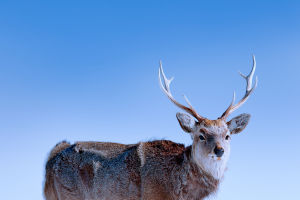The blue jay, also known as the blue bird, is a colorful and talkative bird that is commonly found in North America and other regions.
The blue jay belongs to the jay family, and its body length is approximately 9-12 inches with a weight of 2.5-3.5 ounces. The bird has a life expectancy of around 7 years and is an omnivore, primarily found in central and eastern North America.
Although the blue jay is sometimes referred to as the blue bird or jay, it is not to be confused with other bird species with similar names. The overall population of blue jays is currently stable, and the species is not considered endangered.
The blue jay is undoubtedly one of the most beautiful birds ever seen, with a stunning blue coloration and unique feather structure that creates an illusion of iridescence.
According to legend, there was a blue bird in ancient China, and it is believed that the blue jay is the closest relative of this mythical creature. Blue jays are similar in appearance to the red-billed blue magpie, which is also a bird of the jay family.
However, blue jays are slightly smaller, measuring only about 20 cm and weighing only 70 grams. The upper part of their body is mainly lavender-blue, while the lower part is white, and they have a long tail, which makes them look quite similar to the "green bird."
Both male and female blue jays have similar colorations, including black eyes, black legs, and a black bill. The bird has a white face with a blue crown, back, wings, and tail. A U-shaped collar of black feathers extends around the neck to the sides of the head.
The wing and tail feathers are black, light blue, and white. Like peacocks, the blue jay's feathers are actually brown, but they appear blue due to light interference in the feather structure. If the feathers are crushed, the blue color will disappear. Adult males are slightly larger than females.
Blue jays primarily live in North America and feed on plant fruits and small invertebrates. They are easily recognizable in the wild with their blue plumage, long tail, and signature crown. During courtship, the crown stands up and unfolds when frightened, making it a very peculiar sight to behold.
Blue jays live in southern Canada, south to Florida and northern Texas, and along the east coast west to the Rocky Mountains. They prefer forested habitats, but they are highly adaptable and continue to breed in residential areas in deforested areas.
Blue jays are omnivorous birds and will eat small invertebrates, pet food, meat, and sometimes other chicks and eggs. They use their strong beaks to crack acorns and other nuts, and they also eat seeds, berries, and grains.
Approximately 75% of a blue jay's diet is plant matter. Blue jays have also been associated with happiness and are legendary in North America as a bird that brings good luck. It is believed that the blue jay can guide the lost to safety and the soul to its final destination.
If a blue jay is perched under your roof, it is considered a sign of good luck.
The blue jay is a stunning and talkative bird that brings beauty and good luck to people. Its unique coloration and feather structure make it easily recognizable in the wild, and its adaptability allows it to thrive in various environments.
The blue jay's omnivorous diet and association with happiness make it a beloved species in North America and beyond.


